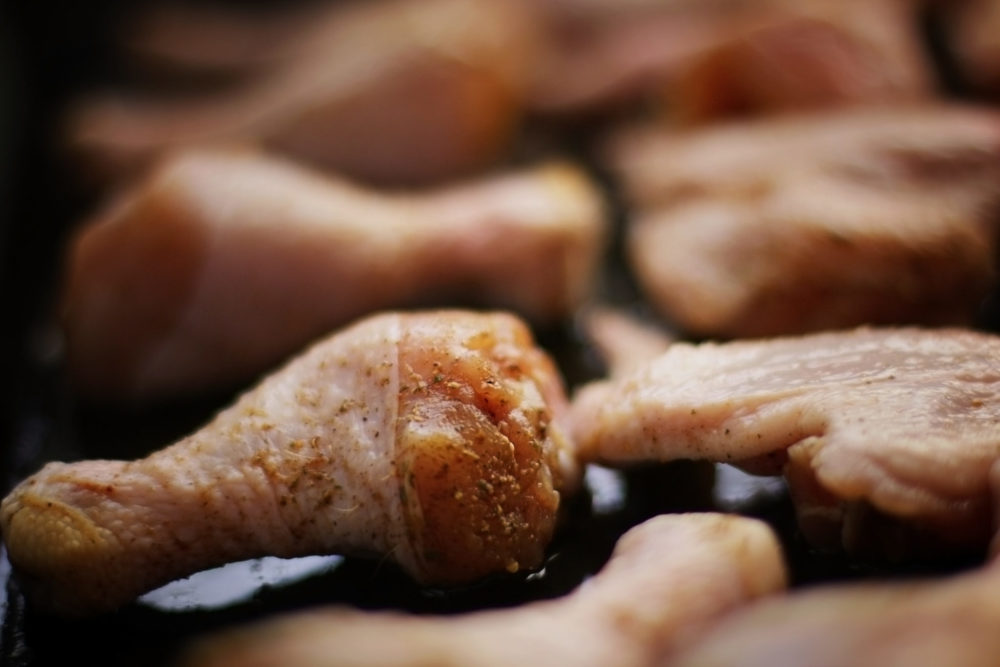Poultry and Food Safety
Statics show that every year about millions of people around the world gets sick from eating poultry that’s contaminated with harmful bacteria. That’s why it’s important to follow proper preparation and cooking procedures to ensure food safety when it comes to chicken. Understanding Poultry and Food Safety guidelines are essential.
Consuming raw chicken and poultry may contain harmful bacteria such as salmonella, listeria, and Campylobacter. Washing chicken and other poultry do not remove bacteria. You can kill these bacteria only by cooking chicken to the proper temperature.
Washing Chicken Can Spread Harmful Bacteria
According to the Food Standards Agency, washing poultry or chicken before cooking is not recommended. When you wash uncooked chicken, you can easily spread salmonella or other bacteria from poultry juices can be spread to other foods, utensils, and surfaces. This is called cross-contamination. It also makes it more likely someone in your family will touch the contaminated items or surfaces and get sick.
To prevent cross-contamination, build habits such as frequently washing hands,(7 steps of handwashing) utensils, use a red cutting board for raw chicken , and work surfaces. For instance, if you prep a raw chicken on a cutting board, don’t use the same cutting board later to slice tomatoes for the salad. At least not without washing it first. And the same goes for your knife. Think poultry foods safety.
Cooking Chicken to the Proper Temperature
Raw chicken is not safe to eat and will lead to food illness or poisoning. The best way to make sure that your chicken does not contain harmful bacteria is to cook it properly.
According to the Food Standards Agency, all poultry (breasts, whole bird, legs, thighs, and wings, ground poultry, and stuffing) should always be cooked thoroughly to 165˚F (75˚C).
Use a food thermometer to make sure chicken is cooked to a safe internal temperature of 165°F (75˚C). Also, cut into the thickest part of the meat and ensure that it is steaming hot with no pink meat and that the juices run clear.
Food Illness Symptoms / Poultry Food Safety
The symptoms of salmonella food poisoning often come on quickly, usually within 8 to 72 hours after consuming contaminated food or water.
Symptoms may be aggressive and can last for up to 48 hours. Typical symptoms during this acute stage include:
- abdominal pain, cramping, or tenderness
- chills
- diarrhoea
- fever
- muscle pain
- nausea
- vomiting
- signs of dehydration (such as decreased or dark-coloured urine, dry mouth, and low energy)
- bloody stool
In some cases, foodborne illness can lead to serious conditions.
Should you call the doctor?
Anyone can get food poisoning, but children younger than 5 years of age, adults aged 65 and older, people with weakened immune systems, and pregnant women are more likely to develop a serious illness.
Call or see the doctor if you or someone in your care has the following signs of food poisoning:
- High fever (temperature more than 101.5°F / 39˚C)
- Diarrhoea for more than 3 days that is not improving
- Bloody stools
- Prolonged vomiting that prevents you from keeping liquids down
- Signs of dehydration, such as:
- Making very little urine
- Dry mouth and throat
- Dizziness when standing up
Need food safety, food hygiene or anything catering or hospitality based online training? Need it in hurry? Need it at a good price? Need it at a time that suits you? If any of this is true for you, then get in touch with us here at The Training Terminal. We can help to make sure that your staff have everything that they need in order to be the very best that they can be in their chosen career.
- Food Safety Level 1
- Food Hygiene Level 2
- Food Hygiene Level 3
- Food Hygiene Level 2 Manufacturing
- Food Allergy Training
- HCAP Level 2 Training
Simply email us at info@thetrainingterminal.com or call us on 03333 442370

